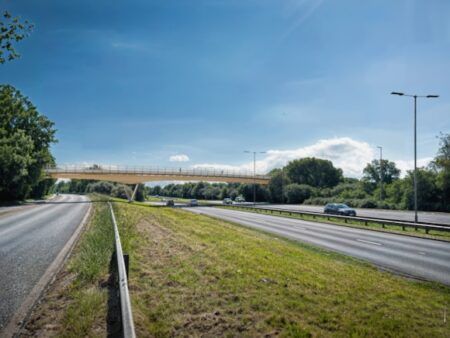Leading automotive technology supplier Continental has launched a new version of its eHorizon system that now includes real-time data to allow commercial vehicles to modify their driving behavior to reduce fuel usage by an additional 2%.
Trucks equipped with Continental’s original static eHorizon system have been able to save an estimated 219 million gallons (830m liters) of diesel since 2012; the equivalent savings of over US1.16bn (€1bn). Developed in collaboration with IBM, the original ‘electronic horizon’ platform used digital maps to let trucks and drivers anticipate the road ahead contributing to safer, smarter and cleaner journeys. With the new dynamic version of eHorizon, commercial vehicle drivers will be able to optimize their driving strategy based on real-time data related to traffic conditions. As a result, they will be able to save fuel even in slow-moving traffic, with comprehensive simulations and early testing showing savings of up to 2% compared with the previous static version.
Continental’s existing static eHorizon system uses detailed topographic route data and a GPS signal to send information on the road ahead to control units in the vehicle. The electronic control units (ECU) then automatically adjust the truck’s driving style and speed. The next-generation dynamic eHorizon now provides even more data on the road ahead due to the addition of real-time traffic information. The enhanced system enables additional potential savings to be made, as the vehicle’s driving behavior can be modified to suit the current traffic situation in advance.
In developing the sensor system, Continental has cooperated with Here Technologies, which supplies the map data and location services, with the real-time traffic data provided by analytics specialist Inrix. The real-time traffic flow data is determined for exactly 820ft (250m) and is updated every 60 seconds, with accuracy to be further increased in the near future. At the back-end, Continental combines the real-time data with route data and sends the information via the mobile cellular wireless network to the dynamic eHorizon’s control unit, letting the vehicle see miles ahead.
The system compares the vehicle’s speed with that of the traffic in front of it. The dynamic eHorizon then relays the traffic data for the next few miles to the drivetrain control units. If the system detects slow-moving traffic or congestion, on the driver’s command, it uses predictive algorithms to initiate coasting, braking or downshifting. The driver is informed by a blue flashing light strip in the cab and a symbol in the display that freewheeling is beneficial. The EcoCoasting mode starts as soon as he takes his foot off the gas. The strip illuminates a steady blue when this is activated. The driver regains control of the vehicle by pressing the gas or brake pedal.
“The dynamic eHorizon ushers in a new era in the control of vehicle systems because it detects events that take place while the vehicle is on the road,” explained Dr Michael Ruf, head of Continental’s commercial vehicles and aftermarket business unit. “The technology therefore makes a significant contribution to the increased efficiency of commercial vehicles and also provides an important basis for automated driving.”




